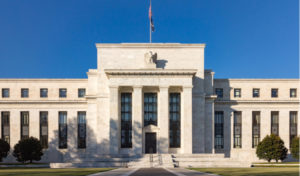Phil Gramm and Thomas Saving write in the Wall Street Journal on the challenges the Fed will be faced with as economic growth returns to normal. To compensate for stifling regulation and misguided economic policies that held back growth during the Obama years, the Fed went full-bore on monetary stimulus. And it didn’t just stimulate during the depths of the last recession. Short-term rates were effectively held at zero until 2016, there were three quantitative easing programs, a twist program to force down long-term rates, and regular jawboning.
What does the Fed have to show for its effort? Growth and inflation, the two intended targets of the greatest monetary stimulus in the Fed’s history certainly didn’t behave as intended. But financial assets inflated. Asset prices across the board are at some of their richest valuations in history.
As Gramm and Saving point out in in the WSJ, the Fed’s efforts have resulted in a banking system where there are $12 in high-powered excess reserves for each dollar of required reserves. The central bank also now holds 20% of all federal debt, a much larger portion of longer-term federal debt, and 34% of mortgage backed securities.
Gramm and Saving go on to say, “In the past eight years, private loan demand has been weak in an economy kept in a stupor by high taxes and an avalanche of regulations. In this stagnant environment, the Fed has been able to manage a massive balance sheet and inflated bank reserves without igniting inflation or causing interest rates to rise, further crippling growth. But the Fed’s challenge will grow enormously when the economy returns to normal growth. That will drive up the demand for bank loans, increase interest rates, and induce banks to lend excess reserves. The money supply will start to grow.”
As we have long maintained, the risk of multiple rounds of QE wasn’t worth the return. That risk has been kept dormant by anemic growth, but if the last three quarters are any indication of what lies ahead, the Fed may have a problem. Unwinding $4 trillion in excess liquidity in an environment where investor exuberance is at levels not seen since the dotcom bubble is not going to be without risk.
As Gramm and Saving conclude, “…the monetary excesses of the Obama era represent the greatest impediment to igniting and sustaining a full-blown economic recovery.”

